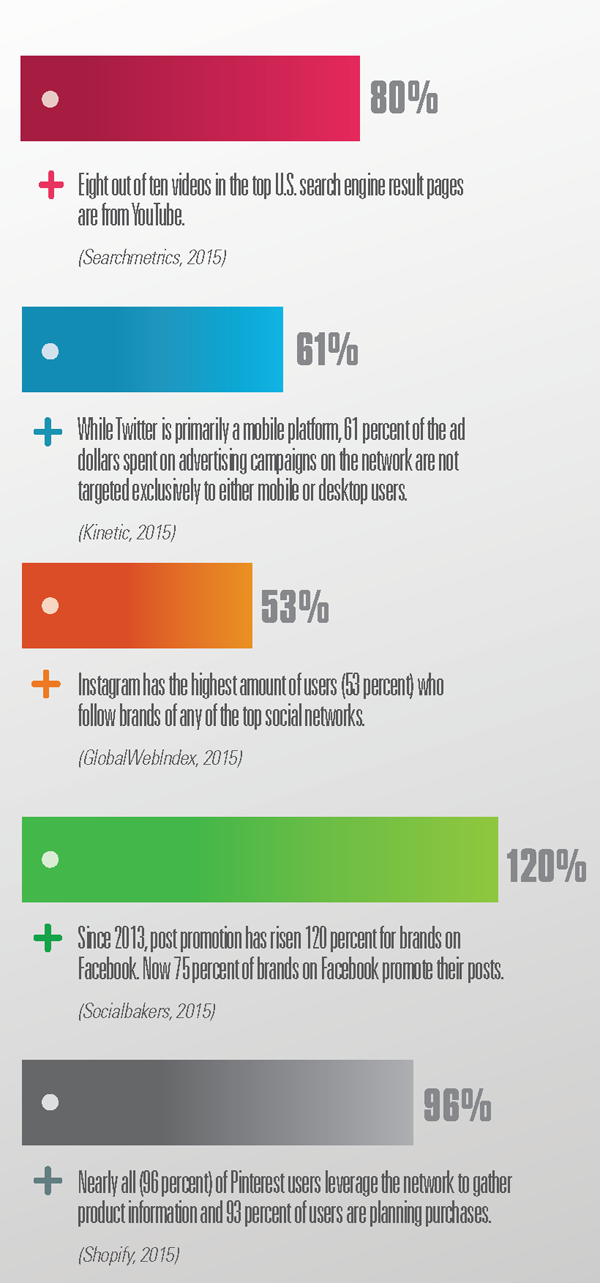Gain Greater Enterprise Visibility with Social Media

Brands should know how obsessed the average user is with social media.
Recent data from GlobalWebIndex, in fact, indicates social networking accounts for nearly 30 percent of a Web user's daily Internet activities - but to what effect does consumers' social use have on a brand's ability to be found online? Ninety-one percent of marketers, who invest as little as six hours a week on the various social networks, indicated their efforts increased exposure for their businesses (Social Media Examiner, May 2015). While exposure in this study was not used quantitatively, it is considered the top benefit of social media marketing according to those surveyed, followed by increasing traffic and developing loyal fans.
One of the ways social media may be helping marketers increase exposure for their brands is through its prominence in today's search engine result pages (SERPs) where Google+ posts still receive prominent placement, tweets are once again being indexed in real-time and Facebook is often a top organic result for a brand query. In fact, Searchmetrics found this year that higher-ranking URLs have more social signals (as reported in the company's Search Ranking Factors and Rank Correlations whitepaper).
Further, at least 61 percent of those investing a minimum of six hours per week in social media marketing saw improvements in search engine rankings according to the previously mentioned Social Media Examiner report. What this means is that brands cannot focus solely on social media nor can they focus solely on search engine optimization or any other channels or initiatives exclusively. The optimal approach should be to balance efforts and investments across channels.
To see which channels are playing a role in an industry's path to purchase, marketers should plug in their data to Google's Customer Journey tool (wsm.co/cjourney15).

Subscribe to Our Newsletter!
Latest in Social Media











